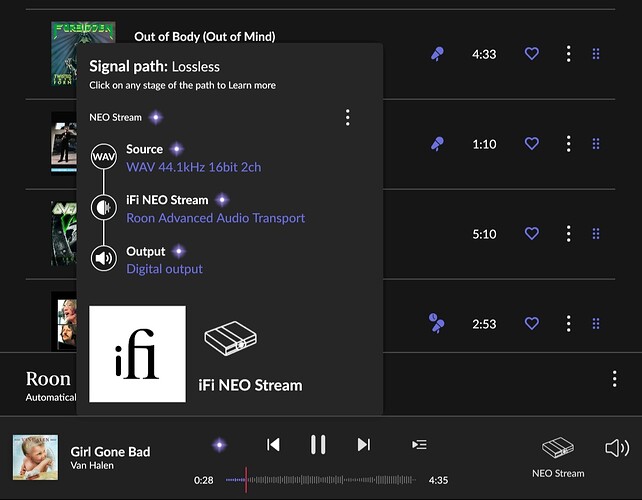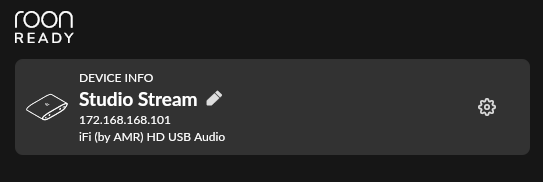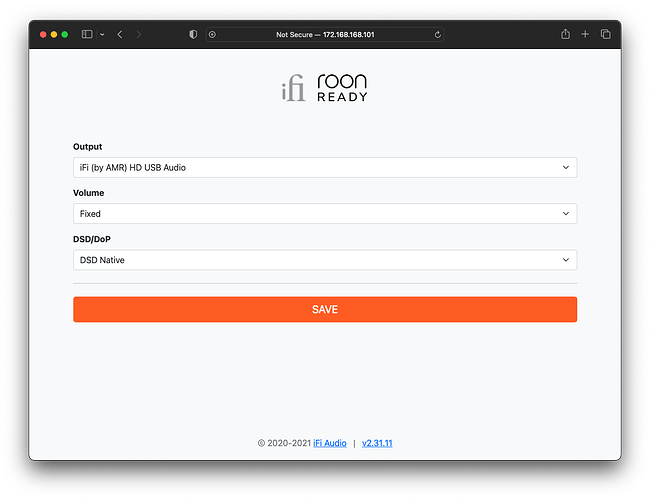Gustard A26 : It is currently at DHL and I hope to have it at my home next week.
First, I will test it in USB with the ZenStream (NAA optimized), just to judge the AKM DAC vs Pegasus (DSD 6bits) side.
Then I could test the result of the network simplification… no more ZenStream and USB. NAA inside and direct network.
With what iFi audio refuses for the ZS: DSD 512.
Wonderful as pegasus it is on my short list and also thinking about the A26. Same NAA only.
Pls report back. Thanks
Curious to hear your thoughts about it! I have the Neo Stream coupled to a Topping d90se, so I already have the DSD 512 and PCM 768–for me I don’t think it offers anything I don’t already have other than a single unit solution (the A26 also has a specified HQPlayer mode and is Roon Ready, but no Tidal Connect as of yet).
If I had known about it sooner I could have saved around $800 ![]() But I’m happy with what I have. Maybe if I add another room someday!
But I’m happy with what I have. Maybe if I add another room someday!
PS One thing is for sure—Gustard’s quality is peerless. The architecture inside their chassis is a work of art in itself. This is their first foray into a streaming solution, and gosh if some folks could get past their anti-Chinese snobbery they’d certainly avail themselves of the highest quality digital audio solutions imaginable at a fraction of the cost!
Is this device truly Roon Ready or is it just running Roon bridge (like Zen Stream)?
I thought that the Zen Stream moved to fully Roon Ready early last year, as it caused a lot of issues with the ability to drive both outputs at the same time among other things.
Have a look at the Roon Partners page and they are both listed as Roon Ready
When I still had mine there was some confusion surrounding its RR status. It still showed up as a bridge in Roon’s signal path (or maybe it was the configure device page). Shortly after that I sold mine so I don’t know.
Not using raat anymore but out of curiosity (in just few words) what it the difference between being Roon Ready and just having the Roon Bridge on it?
Thanks for the link
There are some additional capabilities on Full RAAT support that require Roon to be able to peak and function right into the full signal path. This is where some companies fail with RAAT ready as they are unable to meet the requirements of this
(probably explained that badly but it is all I can think of in a hopefully short and simple to understand)
Thank you both. From the link and your explanations I get an idea. As I remember when out of the box zen stream was just roon bridge and with firmware updated it is now Roon Ready (I know that are different categories on the roon settings audio but I do not remember if the settings were different).
Thanks
The question wasn’t whether RAAT was supported but how.
The Zen Stream was supposedly RR but still showed bridge status on is device setup page (while showing SDK on another):
I have no idea if this was fixed by iFi as I sold my ZS long ago. It also could very well have been nothing more than a cosmetic error/bug but iFi’s track record with this particular product makes it hard to give them the benefit of the doubt, even when talking about the new version.
I must be dense then, forgive me. Your question seemed fairly black and white to me:
I haven’t had time to fully A/B the iFi NS vs my PS Audio DS DAC w/ Bridge II card yet but I have a few comments. I wasn’t able to wire my fiber directly into the iFi as the transceiver I had didn’t seem compatible. And it’s really tough to find a 1G Transceiver with an SC connector. Really tough. I might call iFi to see if (they’re reachable and if) they’d recommend one. But I had to use iFi’s media converter which meant using a copper port from my switch into their box just so I can switch back to fiber. But that’s life as they say. I absolutely hated this thing on first listen. Very obviously bloated and with too much mid-treble presence. Then I remembered when I bought my Ayre gear, it took a good 30-60 mins to warm up before it settled in. So I left the iFi powered on overnight (in fact, I haven’t turned it off since I inserted it over a week ago). I know that stuff is probably taboo to speak about on this board but I know what I hear. And the iFi did manage to settle in to at least sound (nearly) as good as my PS Audio Bridge II card. But that’s as far as I’ve gotten. I haven’t tested things at higher SPLs yet and that may show an improvement over the Bridge II card. Or it might not… I am trying out a 9v LPSU in the next few days which I bought for a network media converter. I can steal it for a short while and see if it makes any sort of difference with the iFi (I’m hopeful).
@audiom3 Here is what I use, straight to a Mikrotik Switch:
20km BiDi SFP 1G .SC. 20 km WDM Bi-directional GLC BX-U/D BX20 A/B 1310/1550
Ebay: 20km BiDi SFP 1G .SC. 20 km WDM Bi-directional GLC BX-U/D BX20 A/B 1310/1550 | eBay
Thank you, Govnah! I just ordered a pair.
And for reference, anyone reading this in the future, this one: https://a.co/d/iNS9Sdk) does not work.
Update: In order for ROON to see DSD capabilities I had to enable ROON mode instead of AIO mode on the NS, then DSD was available from the Device Setup.
Looking for some direction why I don’t see DSD capabilities in ROON for the NS. NS Firmware 2.15.17, DSD direct selected in GUI and using internal DAC of NS. When I setup the NS in ROON I don’t see any DSD options, just MQA and Max Sample Rate (PCM). I was hoping to use ROON’s DSP engine and convert PCM to DSD. Am I missing something here?
Thanks


